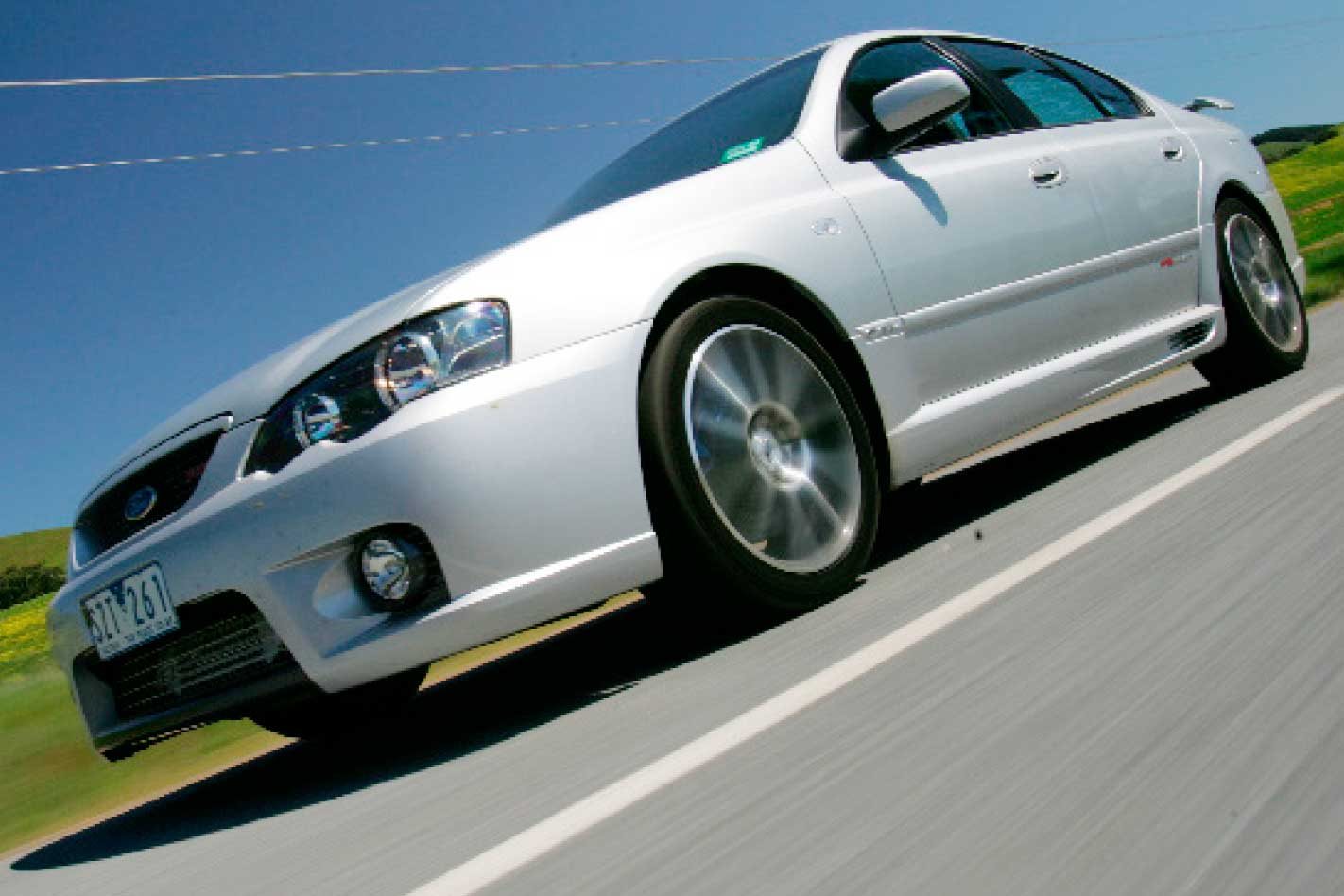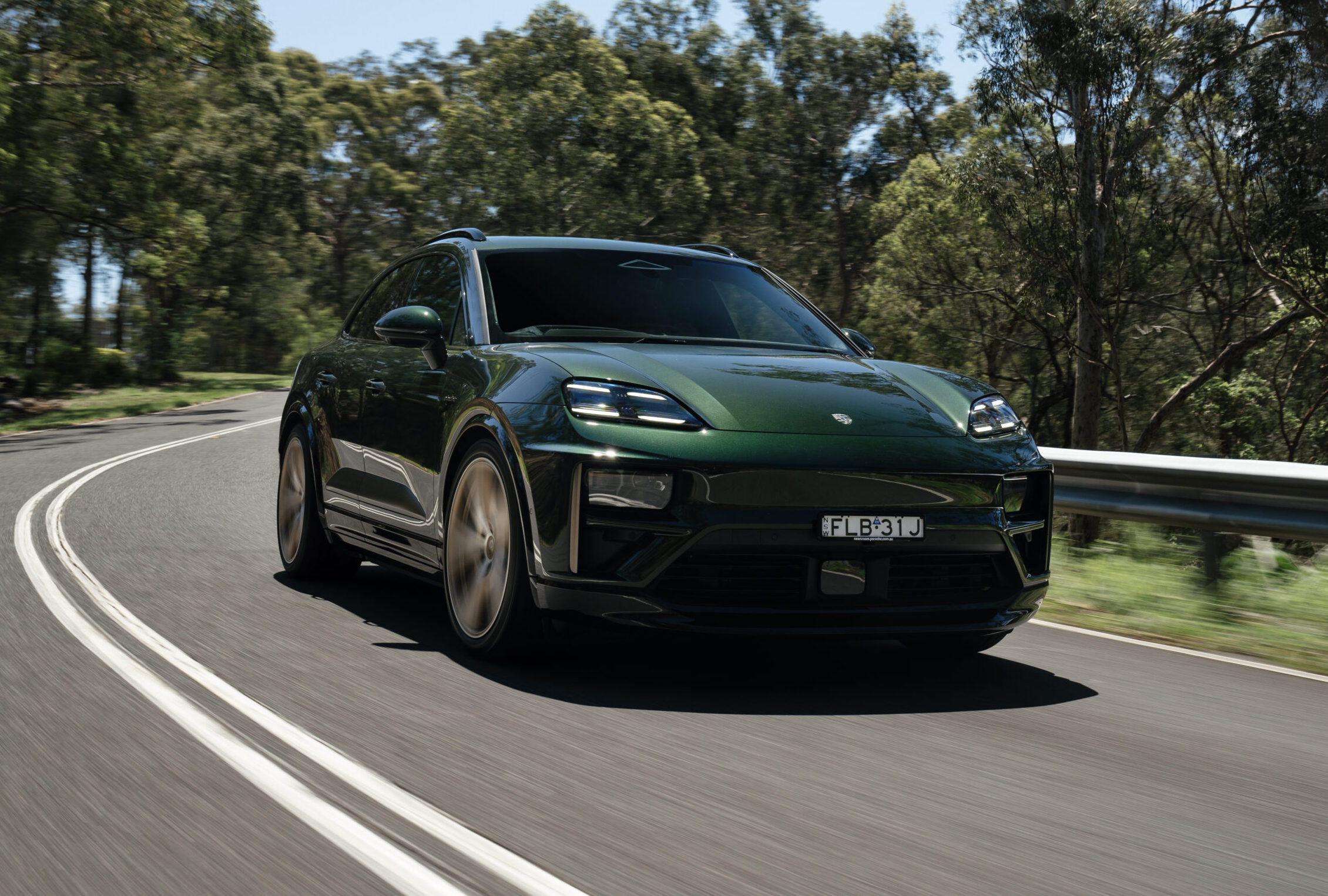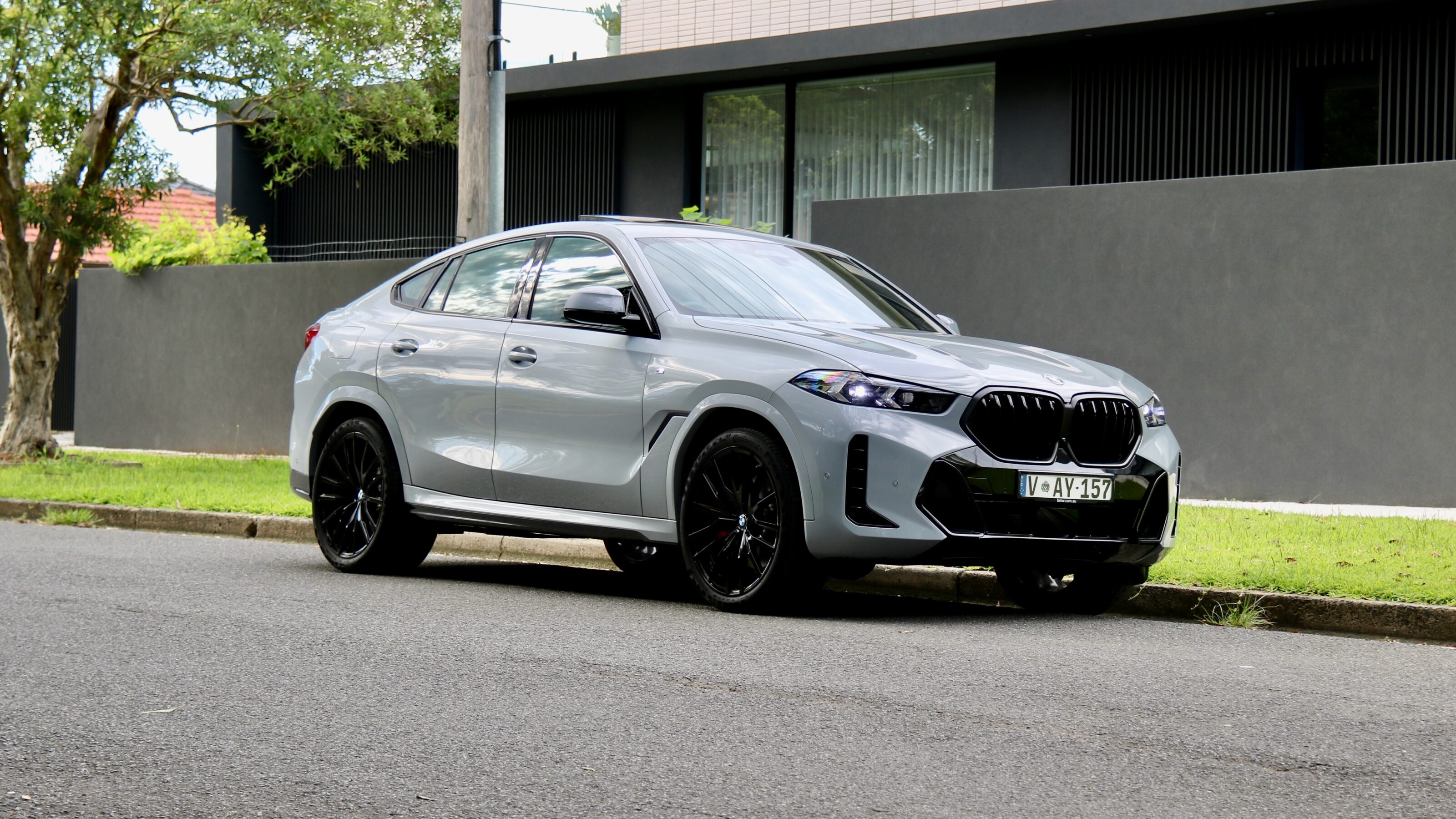Ford’s XR6 Turbo is a favourite in the MOTOR bunker. No surprises there, the blown six’s combination of power and torque, handling and general desire to wag its tail and lick your face is a winning set-up.
This feature was originally published in MOTOR’s December 2004 issue
The blown powerplant neatly sidesteps the major gripes we have with the latest generation of local V8s by producing real, low-rev urge and by not placing any unnecessary weight over the front axle. Our Aussie Rules test of 18 months ago (July 2003) proved the point; the XR6 Turbo shows the rest of the big-inch locals (even the bent-eight ones) the door.
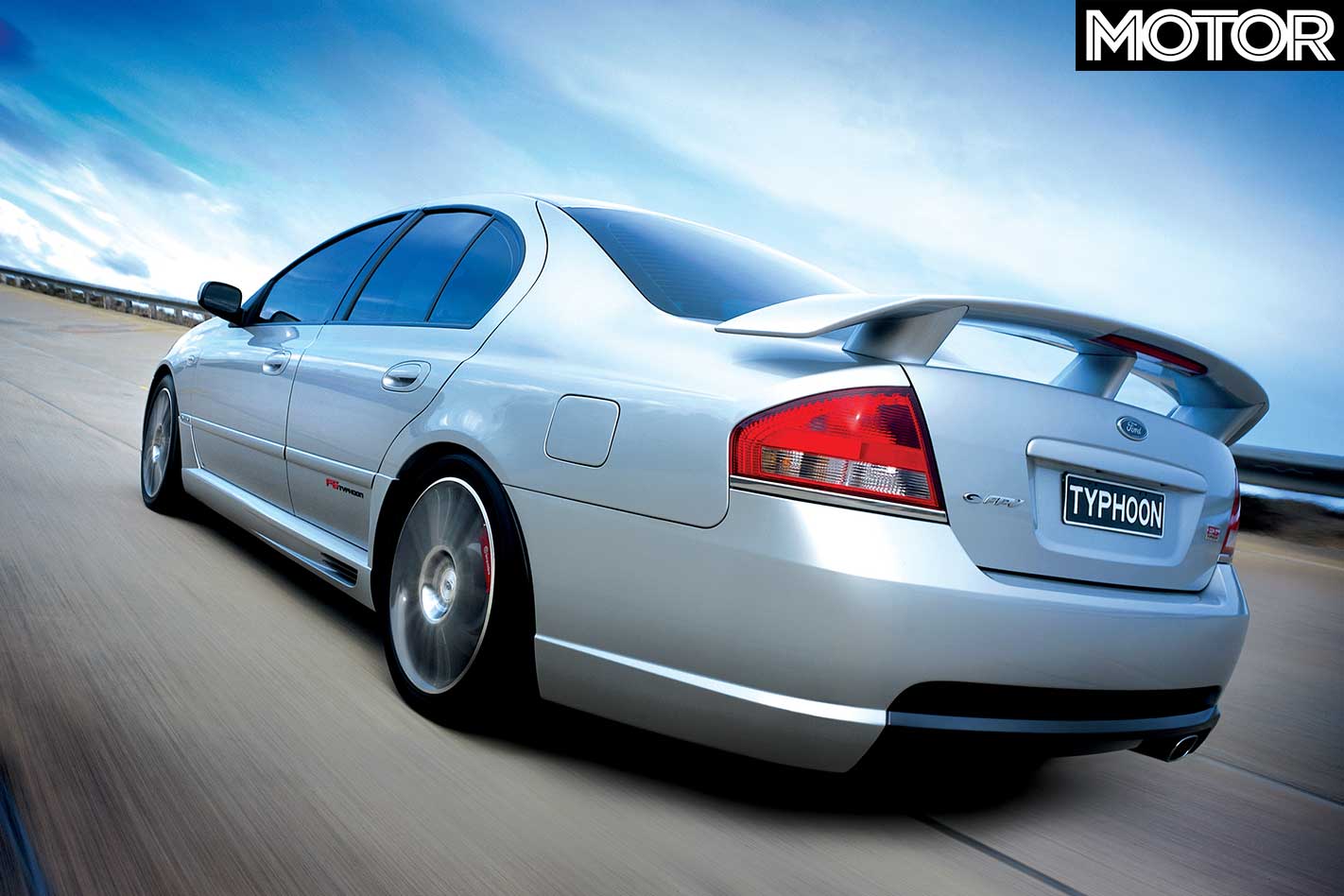
In case you thought the Typhoon was just a tweaked XR6T, think again; there was no way Ford’s hottie-shop was going to badge, as its own, something that wasn’t the full FPV experience. So, the F6 gets specific trim, body kit, wheels, suspension, clutch and engine spec.
Remember, too, the emphasis was always on making sure the car matched the expectations of the sort of buyer with the best part of 60 large to spend on a big, local four-door.
Improving the huffer-fed six would appear to be a bit tricky, given the fact that the basic, 240kW, 450Nm original is so flash to begin with. But according to FPV, screwing a bit more out of the four-litre mill wasn’t at all difficult, given the on-board ECU can control everything from boost pressure to camshaft timing, ignition curve to injector phasing.
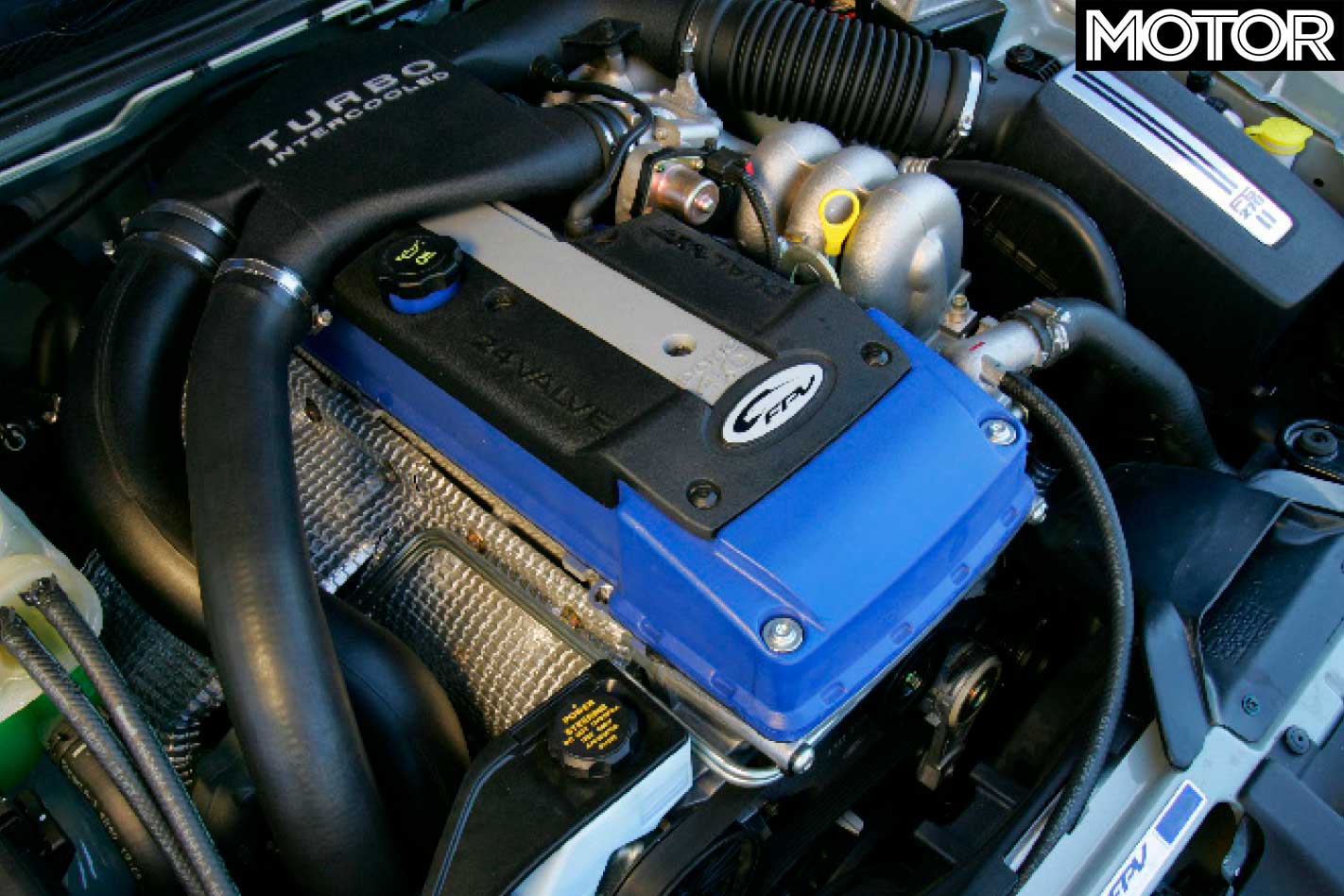
The variable cam timing element has been extensively reworked to pack out the torque curve down low and boost has been upped from around 6psi to 9psi. Getting more air in has also been a priority, so the air-box now has two entry points to reduce the pressure drop into the compressor. The intercooler has 50 percent more surface area and the engine has been recalibrated to run exclusively on PULP.
The cylinder head has been fitted with heavy-duty valve springs and the bottom end has been beefed up with tougher conrods, which feature a fully floating small-end, a la the LPG-specific Falcon six. An oil cooler keeps the lid on oil temp and good thing, too, because we’ve had a couple of Falcon turbos go into limp-home mode during high-ambient track tests.
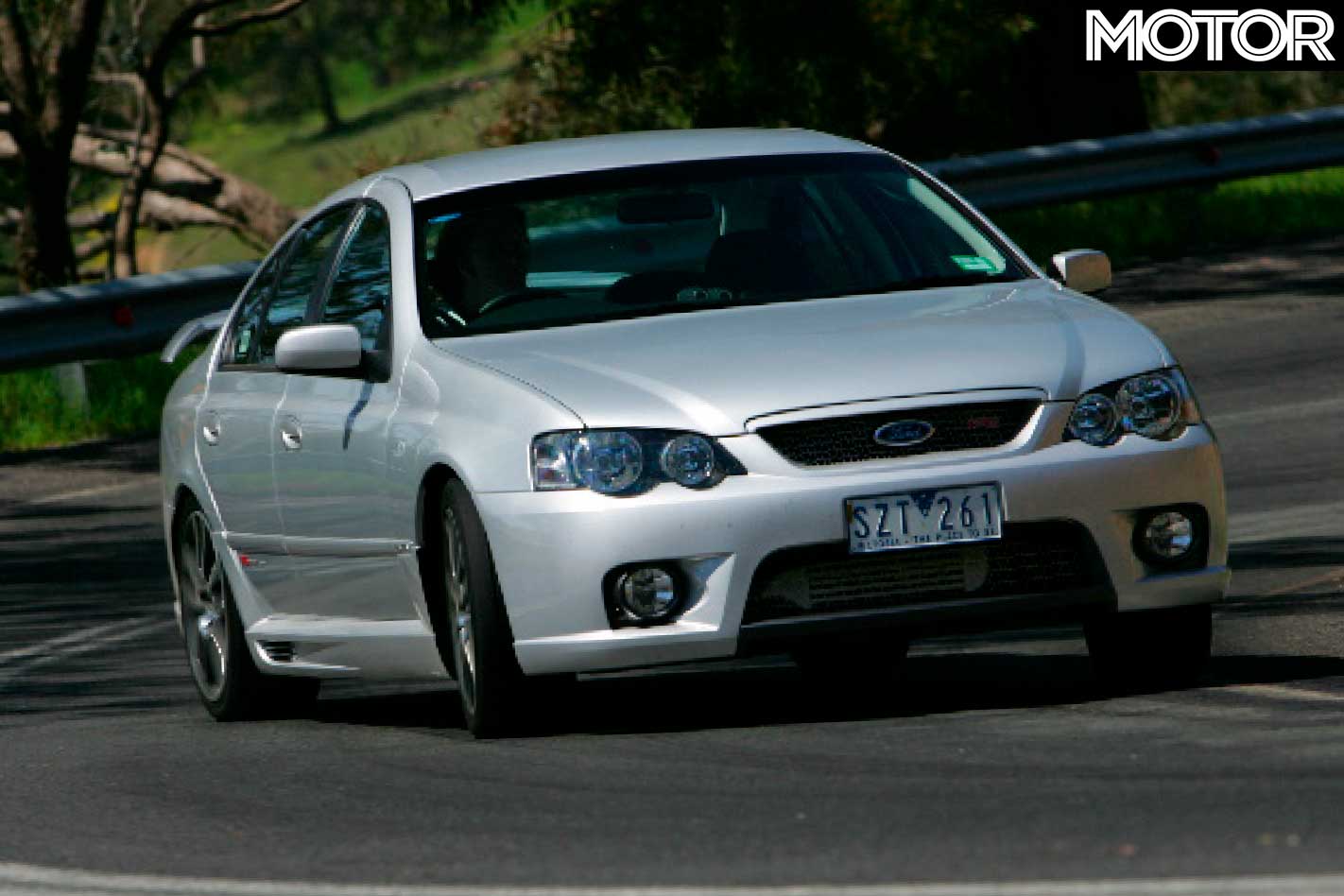
Power has been booted up to 270kW at 5250rpm but the real winner has been torque, which has leapt a full 100Nm to 550 and is available from 2000 to about 4250rpm. The stock XR6T might want to lick your chops, but the F6 is more likely to hump your leg.
Bearing in mind that $58,950 price-tag, it’s no surprise to find that the interior is a bit swisher than an XR6. You get specific seats in a metallic-looking cloth trim (leather is still extra) and the bigger, colour screen for the info display. The steering wheel ought to be changed for something a bit racier, though, if only to get rid of the Ford badge (why no FPV ID?) and to prevent taxi flashbacks.
The F6 also picks up the dash-top pod gauges which monitor oil pressure and turbo boost – remarkably, the latter has no numbered scale! And both look a bit Fisher Price.
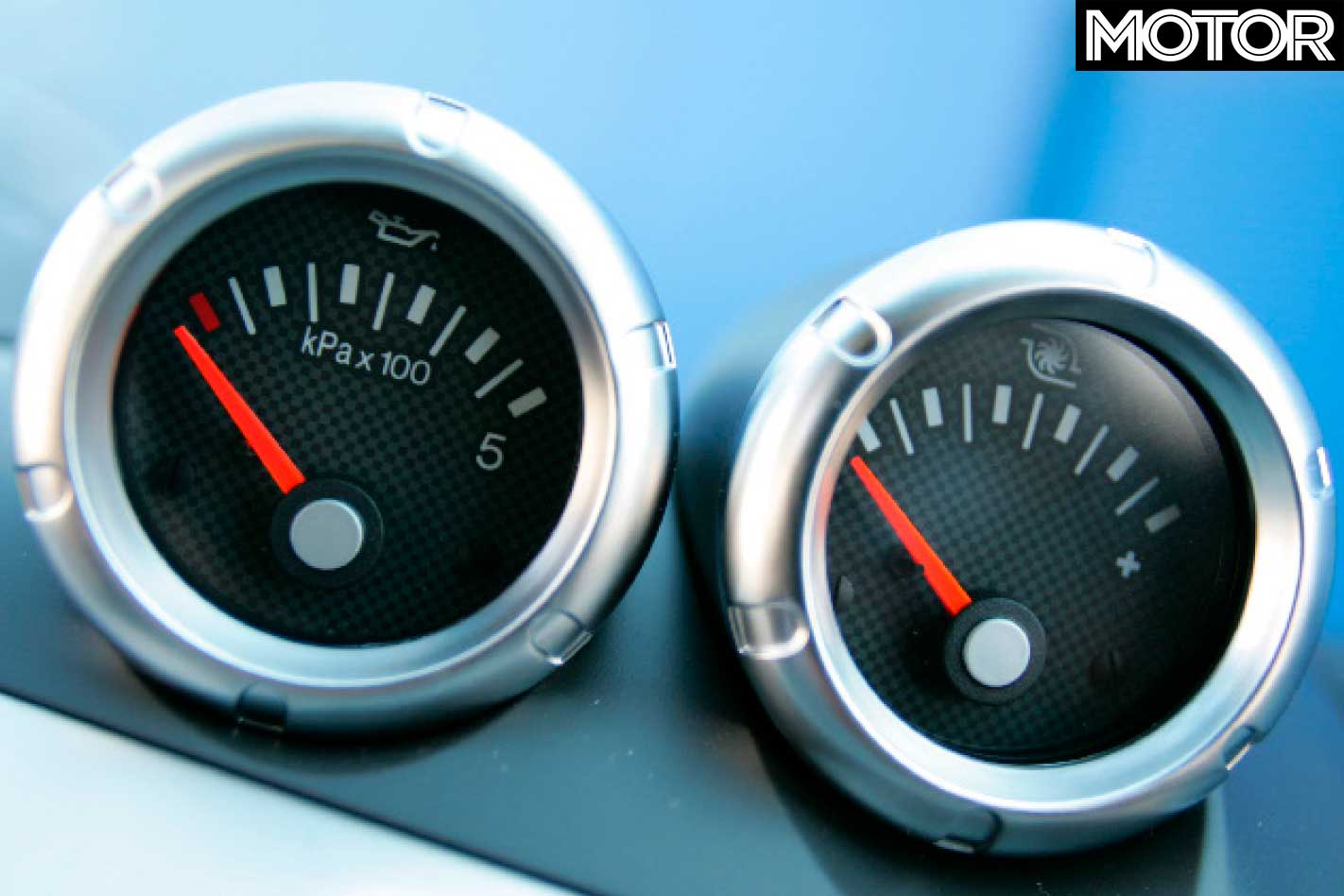
Oh, how my heart sank when I learned Ford was going to use the Tremec T56 six-speed in BA II. See, the Tremec is the same ’box Holden uses in V8 versions of its Commodore and, frankly, it’s a bag-o-spanners.
But since the old T5 just wouldn’t cope with the Typhoon’s torque mountain, a ’box with the requisite fortitude was required. Along the way, it also had to have better ratio options than before, physically fit the Falcon’s floorpan and carry an appropriate price-tag. So the Tremec it is, then.
The switch to the six-speed also gives Ford and FPV the chance to fit the same ’box to both the turbo-six and the V8, so there’s an economy of scale thing working, too. But none of that changes the gearbox’s shortcoming.
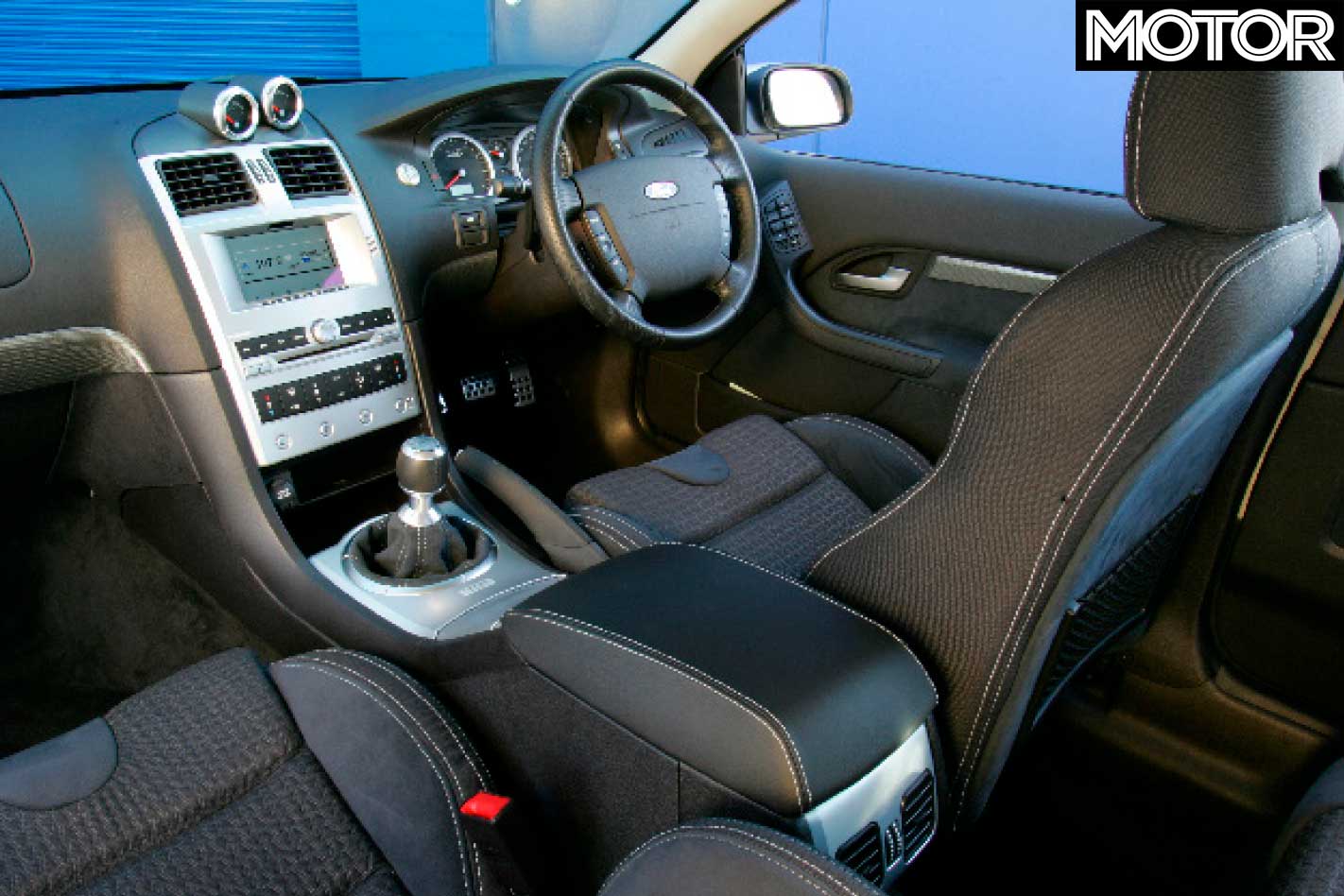
Nope, that job was left to FPV’s engineers, who specced the thing with linear bearings on the shift rail, a double synchro on all forward cogs (and even synchro on reverse) and a direct linkage for the shifter. All that was aimed at improving the shifting experience, which, if we’re going to be honest, is the main thing wrong with the bugger in the Commodore (that and the moonshot overdrive).
FPV even looked at triple synchros, but the re-specced ’box suddenly had all the ratios anybody would want and a shift feel and precision that leaves the Holden version for dead.
And bugger me, it works. The lower top-gear ratios mean both the F6 and revised GT are pulling realistic revs at sane speeds in sixth (a 0.63:1 sixth gear and 3.73:1 [for the F6] final-drive) and you can shift reasonably swiftly and accurately. Okay, there’s still a lot of planes and gates, but wrong-cogging is only a very remote possibility. I’ll draw the line at saying it’s a truly slick shifter, but it is acceptable.
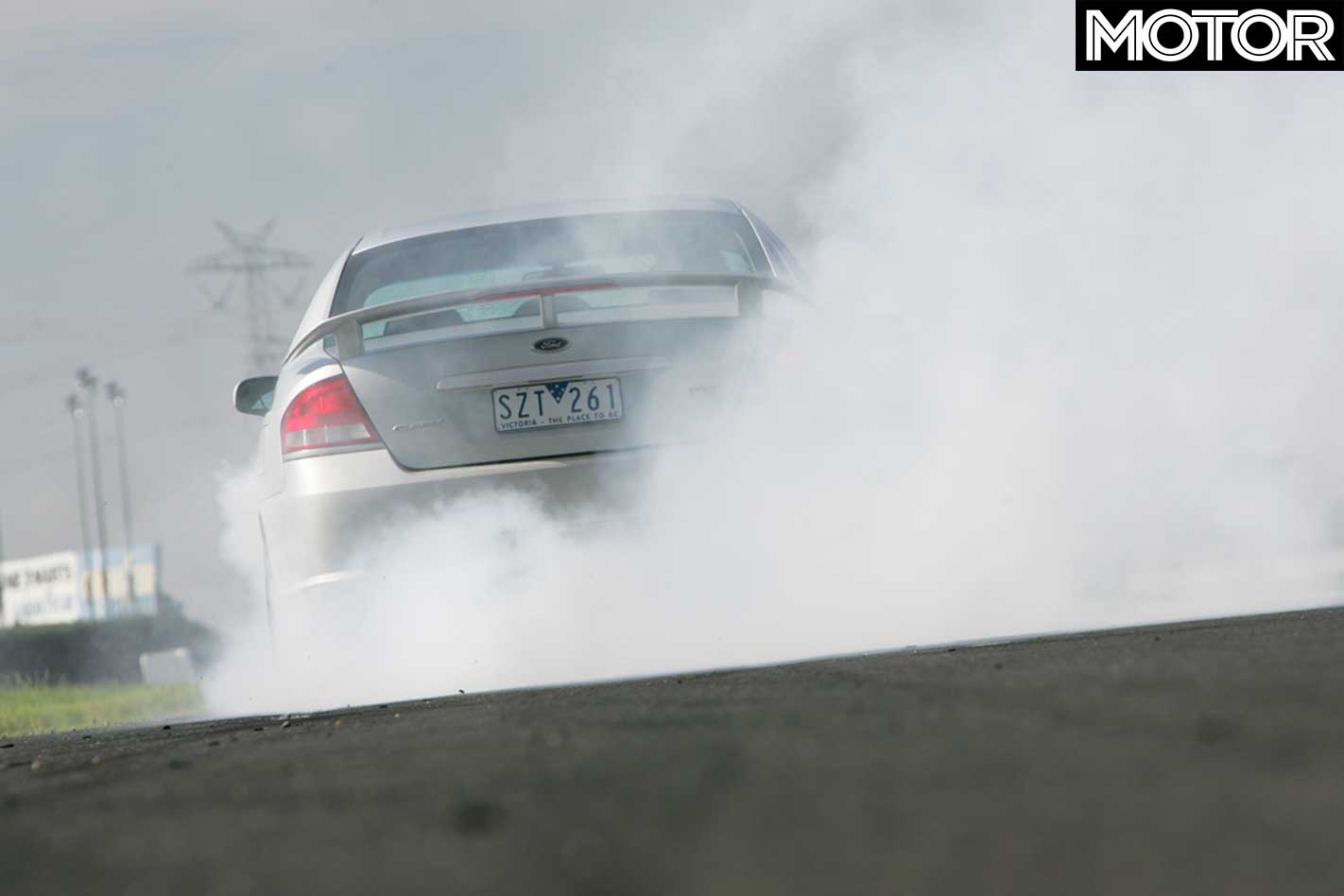
Less happy is the Typhoon’s twin-plate clutch, which is obviously strong and takes up smoothly and predictably, but offers sod-all feel in the process. The friction-point is hard to judge in Blundstones, even through the metal pedal-pads.
But there’s so much grunt, even at low revs, so stalling the thing isn’t really too likely. This was brought home during a photo session, which, in the time-honoured MOTOR tradition, required a burn-out.
Basically, I ballsed it up; stepping off the clutch with nowhere near enough revs on board. In just about anything else, the thing would have bogged and stalled, but the Typhoon’s clutch held and the motor hung on grimly, grunted me back from the abyss, built some boost and then flung the tacho needle into the limiter before I could even think about grabbing second.
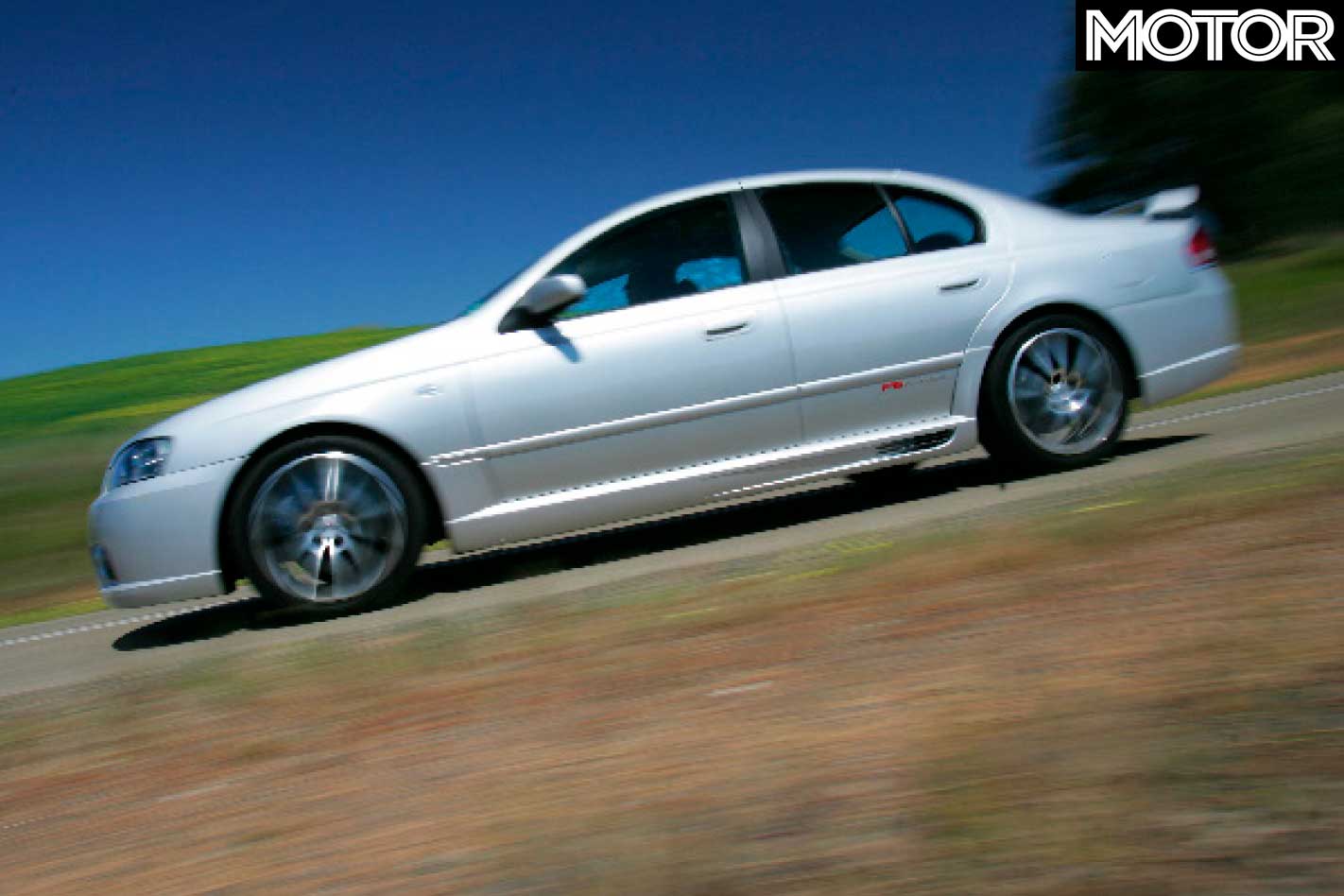
The turbo motor for the XR6T is a super-smoothie and far and away the most refined Aussie-designed engine ever, but now it’s got muscles on its muscles. From idle to about 4200rpm, it outgrunts even the Boss 290 engine in the GT (the previous local torque title holder) and the part-throttle response is so good, it simply wafts you along, ‘Hand-o-God’ style.
Whirring along through rolling countryside, you can easily leave her in top gear and just let the twist do the work, but drop it back to fifth, or even fourth, and it’ll demolish, point to point, anything else I can think of – assuming you also used only one gear.
Get firmly up it, and the whole mood changes. The blow-off valve is a bit rowdier than in an XR6T (it’s dumping 9psi instead of six, remember) but everything else is magnified by the same factor.
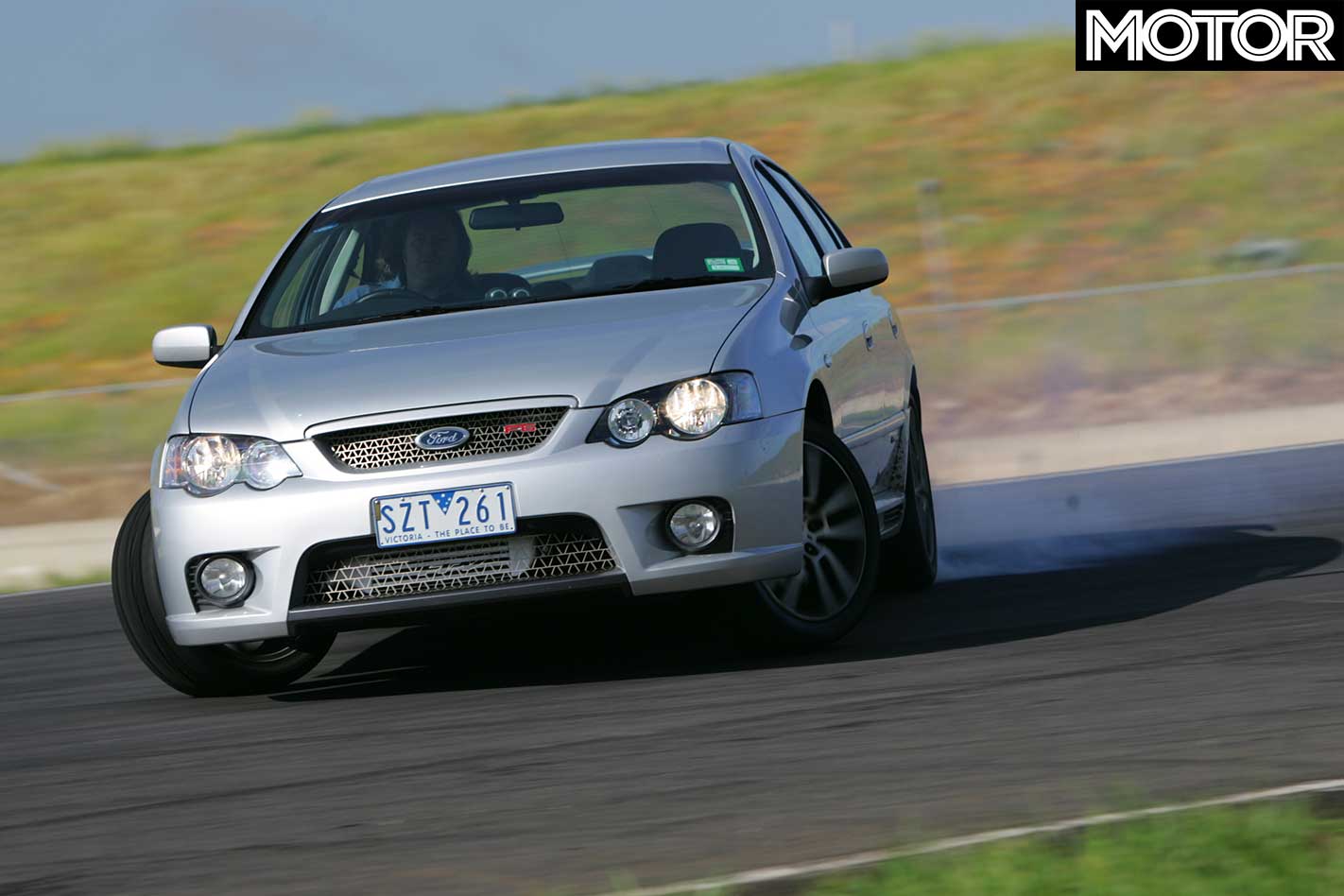
The one thing that strikes me, though, is that the filled-in torque curve down low and the sheer flatness of it means that the big six never feels as rushy as some turbo motors. Compared with an XR6, it’s faster yes, but perkier? No, not really.
Still, bawling it out for having too much torque is kinda harsh, so just take it as read that Australia’s new king of grunt no longer has eight pots.
There doesn’t seem to be as much holler from the zorst as an XR6, either, but that’s probably down to the FPV’s extra sound-proofing. What there is, however, is plenty of bearing rumble from the transmission under load in either third or fourth. At least I think it’s bearing rumble, but whatever it is, it isn’t pleasant.
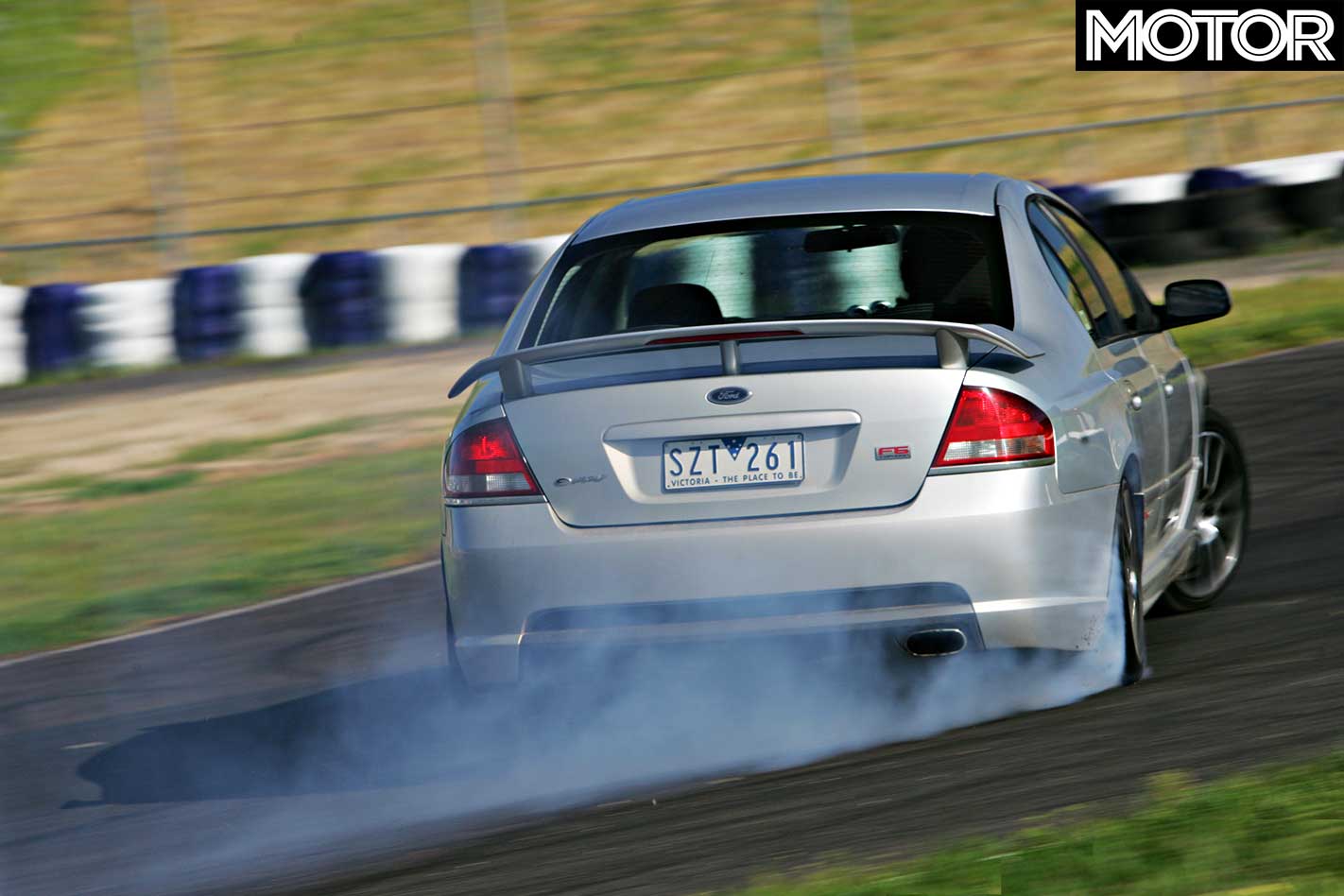
The car I drove also had a weird, low-frequency resonance in sixth gear. It was almost a noise, almost a vibration and I’d be very surprised if it wasn’t a one-off glitch in this very early build example. It’d still send a mutt troppo, though.
Handling is very similar to an XR6T, which figures, although the F6 does get the stiffer rear coils from the GT and 18-inch wheel-and-tyre package. Standard brakes for the Typhoon are provided by Ford’s Performance package and while the optional Brembos are truly mind-blowing, it’s also a $6000 ask to tick that box.
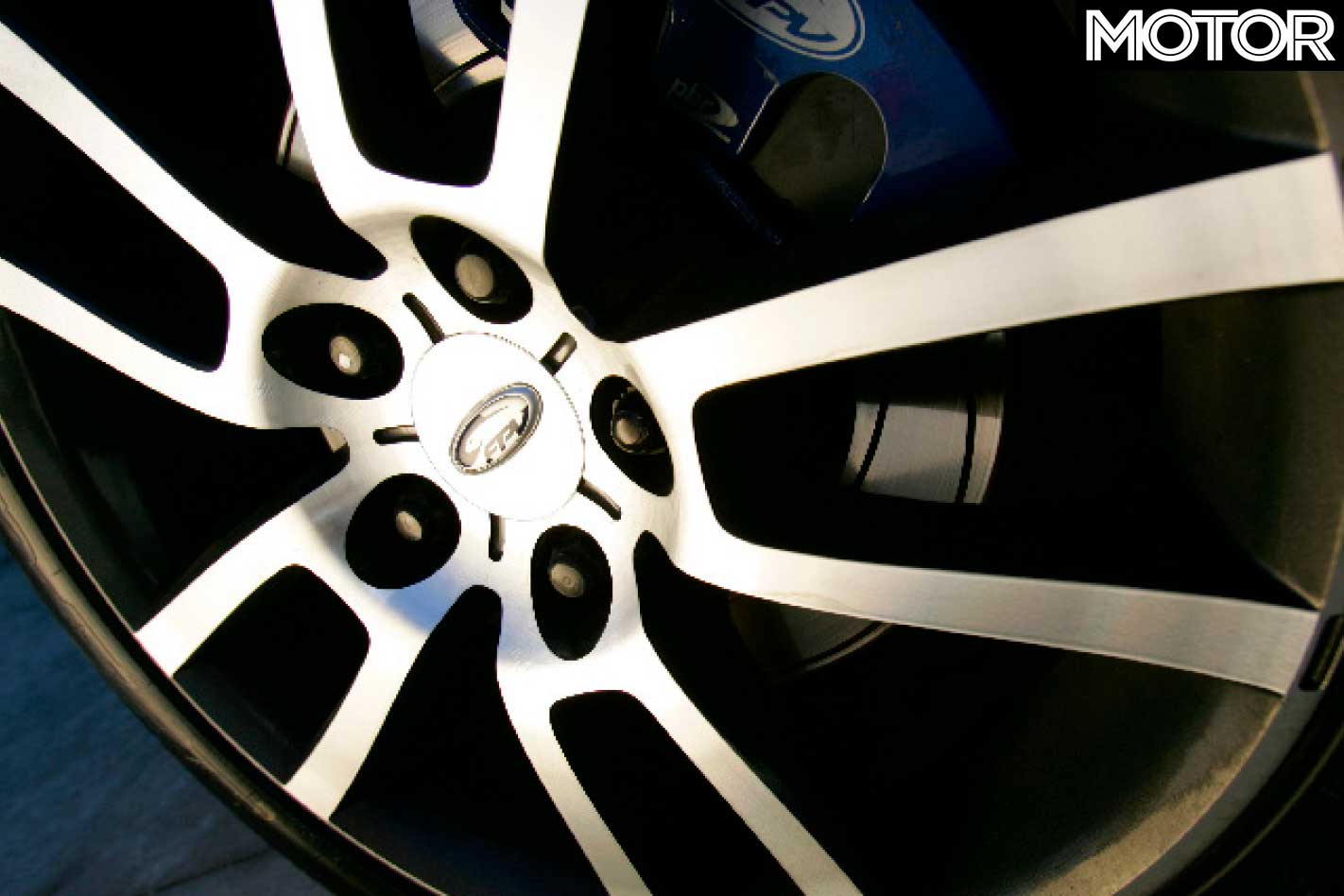
The biggest problem FPV is going to have with the Typhoon (aside from the fact that it gives the V8 a black eye over two-thirds of its rev range) is that there’s no auto tranny option. Officially, FPV is saying there are no plans for such an animal, but the smart money says a new six-speed auto, capable of taming the Newton-metres, is in the wings. I hope so, because the Typhoon would be an absolute weapon with a close-ratio auto.
The F6 is going to give the luxury-performance establishment a kick up the date. It’s torquier than most V8s, spins smoothly and freely and has flexibility that leaves about half of its six gears reading the paper with their feet up on the desk. That it’s under $60k is the killer punch for anything else with designs on the same buyer.
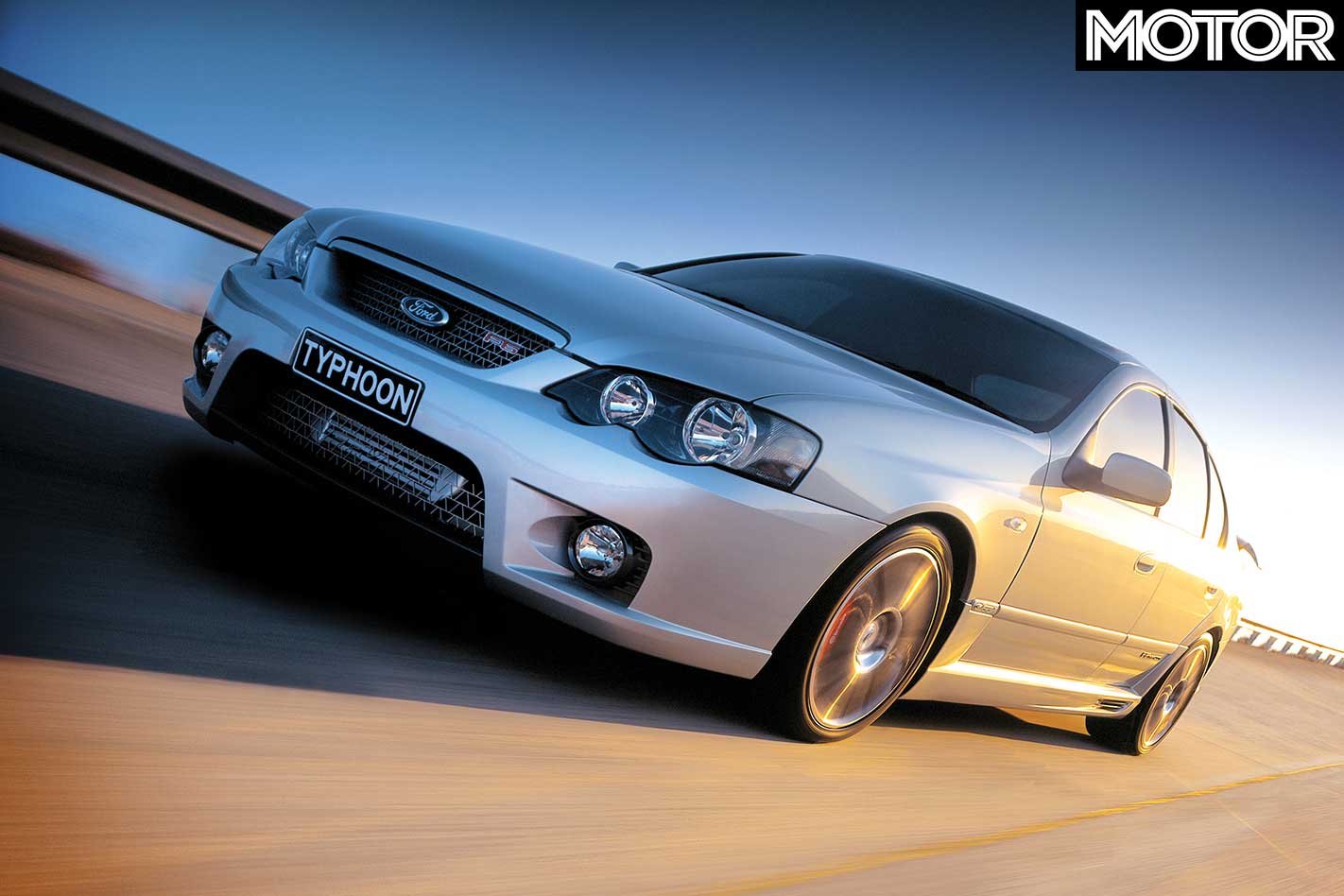
FAST FACTS 2004 FPV F6 Typhoon
BODY: 4-door sedan DRIVE: rear-wheel ENGINE: 4.0-litre inline-six, DOHC 24-valve turbo POWER: 270kW @ 5250rpm TORQUE: 550Nm @ 2000-4250rpm COMPRESSION: 8.7:1 BORE/STROKE: 92.3mm x 99.3mm WEIGHT: 1715kg POWER-TO-WEIGHT: 157kW/tonne TRANSMISSION: six-speed manual SUSPENSION: double wishbones, coil springs, anti-roll bar (f); Control Blade IRS, coil springs, anti-roll bar (r) L/W/h: 4944/1864/1435mm WHEELBASE: 2829mm TRACK: 1560mm (f); 1575mm (r) BRAKES: 325mm cross-drilled & ventilated discs, four-piston calipers (f); 303mm solid discs, single-piston calipers (r), ABS WHEELS: 18 x 8.0-inch (f & r), alloy TYRES: Dunlop SP Sport 9000, 235/40 ZR18 (f & r) FUEL: 68 litres, PULP PRICE: $58,950
PERFORMANCE: 0-100km/h: 5.73sec 0-400m: 14.02sec
5 Mega Twist Monsters
1 – Mercedes-Benz CL65 AMG – 1000Nm twin turbo V12 2 – Koenigsegg CCR – 919Nm supercharged V8 3 – Maybach 62 – 900Nm twin turbo V12 4 – Pagani Zonda C12 S – 750Nm 7.3-litre V12 5 – Dodge Viper SRT-10 – 712Nm 8.3-litre V10
FPV GT V8 – six-speeds and stickers!

You could read too much into the fact FPV reckons the new decal option for its GT is a big deal. Too often, a red-herring like that is designed to draw attention away from the fact that, underneath the stickers, she’s the same old tart.
But this time, there have been some subtle, but very telling, changes to the GT (and GT-P) formula. You already know about the six-speed ’box and, the one I drove was actually slicker than the ’box in the Typhoon driven on the same day. Better accuracy, nicer feel, so maybe the unit in the F6 will smooth out a bit more with time and kays.
FPV has resisted the urge to bounce the peak power a bit higher, so the changes are mostly to do with the suspension.
It’s not a radical tweak in percentage terms, but slightly stiffer front and rear springs have sharpened up the GT’s act considerably, without stuffing the ride quality. She now points better, quicker and more accurately and there’s a more cohesive feel to the final, $61,350 product. The slightly lower top gear also works for me, even if the GT feels a bit pale after leaping straight out of the F6.
The best GT I’ve driven? Without a doubt. The decals? Yeah, the double flank stripe is now one thin and one thick strip, and there’s a Boss 290 flash for the side of the engine lump-hump. Expect a rush on the latter from Series one GT owners.
PERFORMANCE: 0-100km/h: 5.74sec 0-400m: 13.85sec

